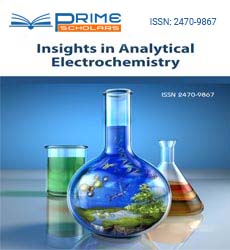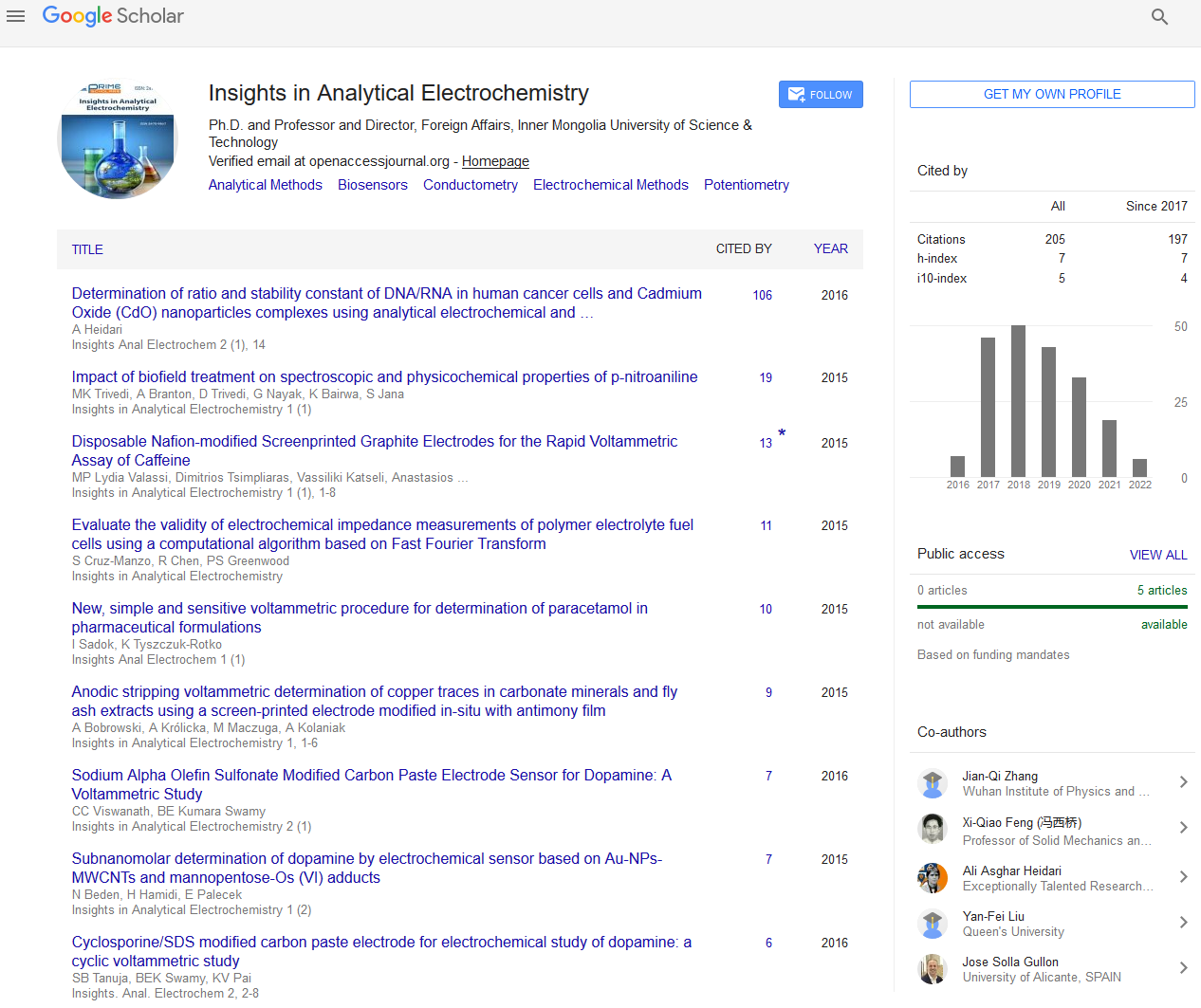Opinion - (2022) Volume 8, Issue 1
Carbene Organocatalysis with Iodine Cocatalyst
Amy Jackson*
Department of Chemistry, University of Washington, USA
*Correspondence:
Amy Jackson, Department of Chemistry, University of Washington,
USA,
Email:
Received: 03-Jan-2022, Manuscript No. IPAEI -22-12709;
Editor assigned: 05-Jan-2022, Pre QC No. IPAEI -22-12709 (PQ);
Reviewed: 19-Jan-2022, QC No. IPAEI -22-12709;
Revised: 24-Jan-2022, Manuscript No. IPAEI -22-12709 (R);
Published:
31-Jan-2022, DOI: 10.21767 / ipaei - 8.1.4
Introduction
Carbene oxidation organelle catalysis, motivated by the oxidative
initiation of pyruvate catalyzed by vitamin B1 to acetyl
coenzyme A, was created as an adaptable blend strategy. Until
now, the α, β, γ, δ and carbonyl carbons of aldehydes (unsaturated)
have been effectively actuated by mechanical oxidation
of heterocyclic carbenes (NHCs). Contrasted and redox or
photooxidative strategies, electrooxidation, albeit generally
utilized in robotic examinations, is significantly less concentrated
in NHC-catalyzed natural amalgamation. Here, a NHC
electronic catalysis framework with an iodine impetus was created.
Because of the lopsided conveyance of the electrolytic
framework, NHC and iodine, which are not typically viable in
compound responses, participated well in the electrochemical
framework. This cocatalyst framework gives general answers
for single electron move electrochemical oxidation (SET) of
Breslow halfway change to broadly useful change. The base
clock explore and the cyclic voltmeter results recommend an
anodic revolutionary coupling pathway. Oxidative actuation is
an overall method of enactment that exists generally in foundational
science as well as in engineered science.In mitochondria,
the oxidative enactment of pyruvate to acetyl coenzyme A
(CoA) has been known beginning around 1937. In this change,
pyruvate is believed to be first responded with thiamine pyrophosphate
(TPP, nutrients B1, VB1) to shape the Breslow middle
after decarboxylation, and followed by oxidation with pyruvate
ferredoxin oxidoreductase. In engineered science, other
than 2oxocarboxylic acids, aldehydes are likewise powerful
substrates for this digestion.
In 1968, Corey and partners fostered the esterification oxidation
of aldehydes involving cyanide as the impetus and MnO2
as the oxidant. Starting around 1977, distinct sorts of oxidative esterification changes have been created, utilizing thiazolium,
imidazolium or triazolium NHC impetuses with various oxidation
states. Among them, tetratertbutyldiphenoquinone (DQ),
spearheaded by Studer,was in the end evolved as the most
widely recognized oxidizing specialist in NHC organogenesis.
Following Studer’s spearheading work on βLUMO initiation
with NHC organocatalysis in 2010. As of late, a redox initiation
mode SET has been created in NHC organocatalysis, with an
oxidation technique.
Description
Along with the anodic electron move as the green oxidant, electrochemical
oxidation is one of the ideal decisions for actuating
oxidation. Enlivened by the biomimetic electrochemical oxidation
of pyruvate, Boydston and associates created spearheading
work on electrochemical oxidation of carbene organelles in
2013. With a thiazolium impetus NHC, different aldehydes are
tenderly oxidized to give esters or thioesters, separately, in unified
cells with steady direct current (DC). Notwithstanding, this
framework is restricted to (thio) esterification with a thiazolium
NHC impetus and has not been additionally evolved in the earlier
ten years. The brilliant universe of catalyzing the oxidation
of carbenes with various NHC impetuses (imidazolium, triazolium
NHCs), various methods of enactment (α, β, γ or δcarbon
functionalization) and Contrast-specific change is as yet hanging
tight for a typical and productive electrochemical oxidation
framework. Motivated by the idea of coupled electrolysis proposed
in crafted by Lin in 2018, here we have fostered a general
electrocatalysis framework for carbene oxidizing organocatalysis.
The mix of these two revolutionaries produces intermedaite
II, which keeps on creating the acyl azolium middle of the
road after recovery eliminating the iodine anion. It should be noticed that iodine can be harmful to carbene impetuses and
has never been utilized as an oxidizing specialist in natural NHC
catalysis. Nonetheless, utilizing the inconsistent dissemination
of the electrolytic system56, age of iodide revolutionaries was
actively very much controlled to go through revolutionary coupling
with the NHC I halfway moiety connected.
Conclusion
This cocatalyst technique offers an additional opportunity for
electrochemical responses utilizing contrary cocatalyst frameworks
in customary substance responses.
Copyright: This is an open access article distributed under the terms of the Creative Commons Attribution License, which permits unrestricted use, distribution, and reproduction in any medium, provided the original work is properly cited.

